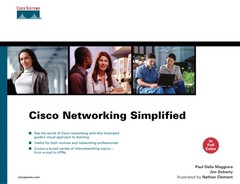Multiprotocol Label Switching (MPLS) is a Layer 2 WAN backbone technology that delivers virtual private network (VPN) services over Internet Protocol (IP), traffic engineering capabilities, and a converged network infrastructure that replaces traditional Frame Relay and ATM networks. Originally developed by Cisco Systems in the form of tag switching, MPLS was adopted as an Internet standard by the Internet Engineering Task Force (IETF). Service providers are the primary implementers of the technology.
Service providers offer MPLS services as an alternative to traditional Frame Relay, leased line, and ATM services. With MPLS, service providers can offer similar services to traditional WAN technologies at lower costs and provide additional IP-based services previously not available.
At the heart of MPLS is an encapsulation scheme that serves as an alternative to traditional IP routing. When a packet comes into the service-provider edge, a router assigns a tag to the packet based on the destination IP network. The tag is a type of shorthand for a traditional IP-based route. After the tag is applied, the router forwards the packet into the MPLS core. The core routers read the label, apply the appropriate services, and forward the packet based on the label. After the packet reaches the destination edge of the service-provider network, the MPLS label is removed and the IP packet forwarded onto the IP network.
Traffic engineering is a core component that allows service providers to deliver services predictably for each of their customers. MPLS traffic engineering expands on the capabilities offered by ATM and Frame Relay. Tagged IP packets are routed through the MPLS core based on the resources required by the packet and available network resources. The MPLS network chooses the shortest path for a traffic flow based on its resource requirements. It determines resource requirements by the size and priority for a traffic flow. MPLS networks honor IP quality of service (QoS) by delivering both best-effort delivery as well as time- and bandwidth-sensitive guarantees.
Service providers offer MPLS-based services in the form of VPNs. Using MPLS labels, service providers can deliver IP-based services to many customers without the complexity of traditional Frame Relay or ATM circuit management. Customers can use private or public IP addressing without concern for overlapping other customer addressing.
MPLS VPN services are as secure as Frame Relay in that one customer cannot see the traffic from another customer even though they traverse the same MPLS network. For additional security, customers can place firewalls between their private network and the service provider, as well as encrypt the traffic as it goes into the MPLS network. As long as the packets have standard IP headers, the MPLS network can ship the packet to its destination.
Because MPLS networks look like a private intranet to the connected IP networks, service providers can provide additional IP-based services, such as QoS and telephony support within the VPN, and centralized services, such as web hosting.



